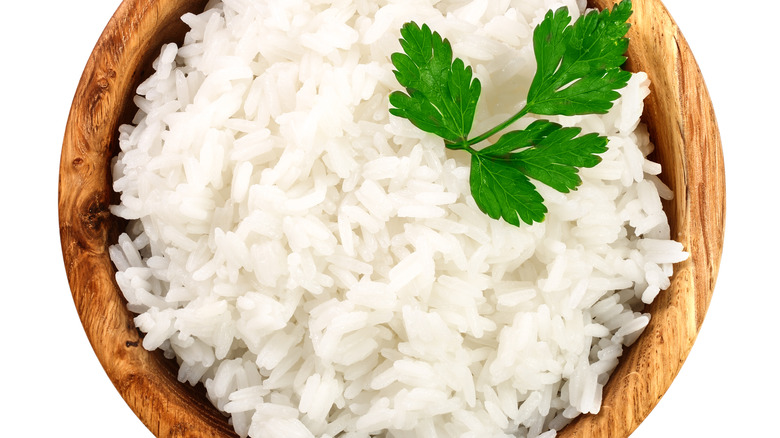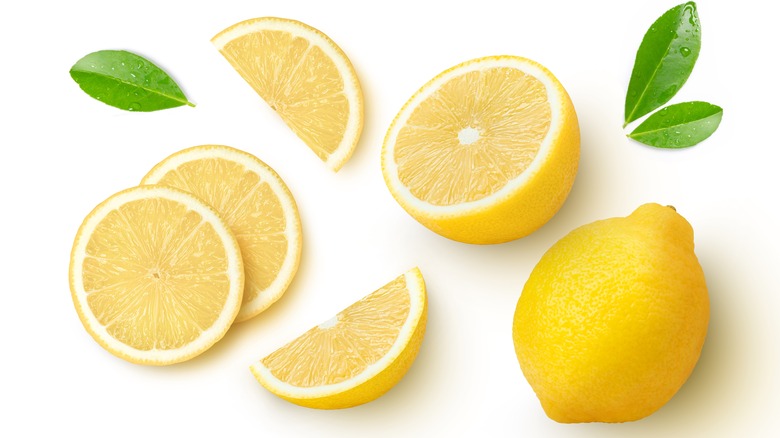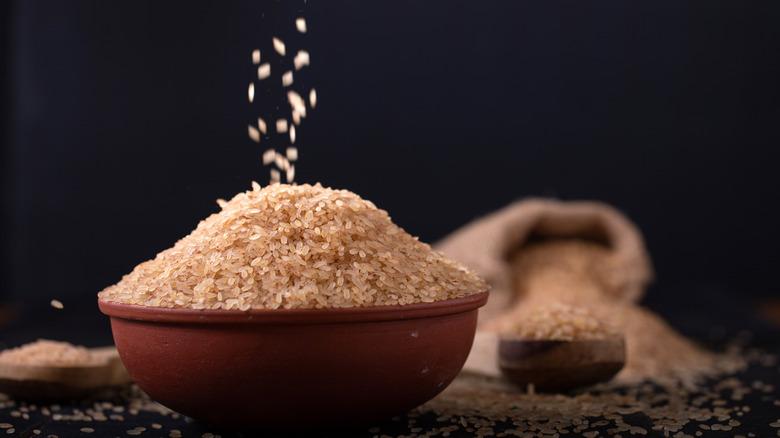Prevent Rice From Sticking With One Easy Lemon Hack
For such a simple grain, rice can be tricky to get perfect. If cooked wrong, the little bits can become gummy, like a thick porridge, and your attempt to make a perfectly cooked dish suddenly becomes a mushy mess. Keeping rice from sticking together when you want that fluffy, separated texture isn't hard if you know how.
While some recipes call for "sticky rice," most cooks curse the luck when it all clumps together. You can blame the starch found in this food for its tendency to mush up, but start with the correct measurements to avoid it. Typically, 1 cup of rice to 2 cups of water is the ratio for both white and brown varieties. Despite following directions, however, perfection is not guaranteed.
You don't have to search high and low for the secret to avoid sticking. Lemons are here to save the day to help keep your rice pretty and fluffy, which makes your food look even tastier. You can prevent rice from clumping with one easy lemon hack.
Add Lemon To Rice To Prevent Sticking
Rice is popular as a side dish on its own, but it is often served as the base of meals such as chicken stir fry, chicken and rice, and even creamy rice pudding for dessert, but keeping it from sticking together takes a bit of skill and patience. Adding a squeeze of lemon juice to the cooking water is the easiest way to prevent rice from finishing with a dreaded glue-like consistency.
Adding a teaspoon of lemon juice won't add an overly tart taste, but it will create a finished product that is clump-free, making it easier to serve. Excess starch is a common culprit for your rice getting mushy, so rinse the uncooked grains well before cooking. The ratio of rice to water is also important, so follow the directions on the packet to ensure that too much liquid doesn't get absorbed.
Rice makes a perfect side dish
This global grain is versatile and tasty, coming in many different flavors and varieties. Explore the different types of rice and how to cook them to bring excitement to your daily meals or to enhance global flavors in international dishes.
Rice has been a staple food for centuries. The oldest evidence of humans harvesting rice as food is in China's Yangzi River Valley region, dating back to 11,000–12,000 BC. And the varieties are impressive, so explore cooking with wild, brown, Jasmine, and Basmati rice, just to name a few.
Although white rice is usually processed, nutrients like iron, folic acid, B vitamins, niacin, thiamine, and more are added back in, according to The National Institutes of Health. Brown rice is generally considered healthier, however, it contains fewer calories and carbs while packing in twice as much fiber. Rice can even also be used to ease a stomach ache! Just be sure to add that lemon juice to make the perfect pot.


